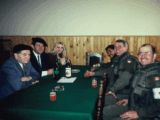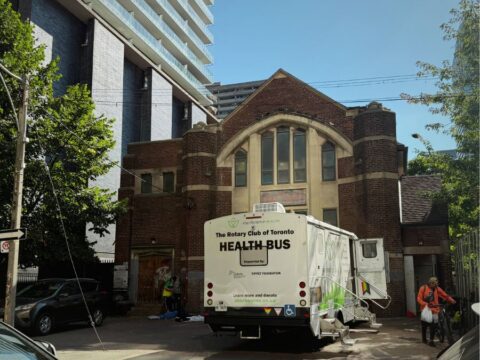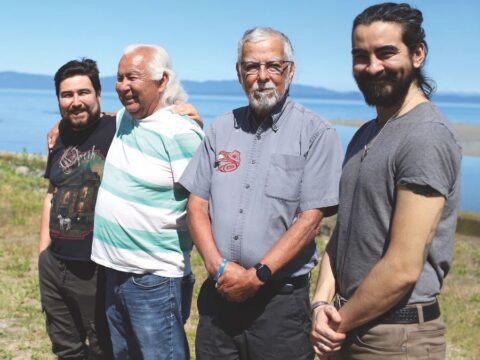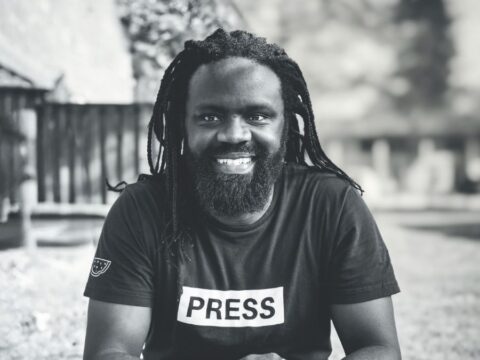A white cross will remain on the cenotaph in Southampton, Ont., for this year’s Remembrance Day ceremonies, after local efforts to update the monument stalled due to controversy.
The aging 1958 monument, which honours local veterans from both world wars, rests on a small traffic island in one of the town’s major streets. It features a white cross that is illuminated at night. Unless the intersection is closed for Remembrance Day ceremonies, the cenotaph is difficult to access. Some community members also feel the Christian symbolism leaves out other lives the town meant to remember, including members of the nearby Saugeen First Nation and veterans from other religions, even though a plaque on the cenotaph honours Saugeen members who died in the Second World War.
You may unsubscribe from any of our newsletters at any time.
John Willetts, then-president of the local Royal Canadian Legion branch, created a community committee in 2022 to update the cenotaph. He had noticed the monument’s disrepair and wanted to advocate for its modernization.
After a year of consultation with the community, landscape architects, Veterans Affairs Canada and faith leaders, the committee proposed relocating the existing cenotaph and adding two limestone columns, similar to Canada’s Vimy memorial in France, for a cost of $250,000. The committee, which included a United Church minister as a theological adviser, also posed two options for the cenotaph itself — one with the existing cross and another without.
Council approved a rough concept for rejuvenation, pledging half the cost, while fundraising efforts quickly secured the rest. Project planning and the specifics of the design were set to begin in early 2024 and construction to finish by this year’s Remembrance Day, coinciding with the Royal Canadian Legion’s 100th anniversary. As the proposal entered public engagement, and a separate streetscape project sparked controversy over the road’s parking spots, the illuminated cross drew more heat than expected.
“We initially intended to integrate the cross, but as time went on, that [came into] question,” Willetts says. “When you come into town at night and look down High Street, the cross is a very familiar and comforting sight to some. But it’s not usually associated with cenotaphs because people from all religions served in the commonwealth effort.”
More on Broadview:
- 141 members of this United church went to war. 19 never returned home.
- 30 years ago, a Bosnian imam gave me a great compliment
- Interned for being Japanese, my family found hope thanks to one minister
In May 2024, a town-hired engineering firm presented four options at a public meeting: restore and repair the existing cenotaph, as recommended by the local Legion’s new leadership; Willetts’s proposed limestone columns, with or without the cenotaph; or build a memorial wall on curb extensions and restore or rebuild the existing cenotaph, as suggested by a council-appointed ad hoc committee. By October 2024, the local Rotary Club, a major donor to the project, demanded a refund if the cross were to be removed, and a survey found 49 percent of respondents wanted the cenotaph as is, with the rest split across the other three alternatives. After a year-long impasse, the council decided this August to forgo changes and restore the existing monument.
“I’ve come to learn that people don’t deal with change well,” says Southampton councillor John Divinski, who served on the ad hoc committee. “People were yelling at me for the revitalization that was going on downtown. I couldn’t go anywhere without someone challenging me or just being upset that there was change.”
Willetts says he still doesn’t know if the town’s resistance to removing the cross was religious or sentimental. Despite his project’s collapse, he hopes to reconvene the community committee soon. He says they never meant to dishonour the cenotaph and that there was a “fair bit of misinformation” regarding their plans for the site.
“There was no way that we were trying to whitewash or dilute the Christian faith or disregard the contributions of any particular group,” he says. “We were trying to respect and augment it, and the only thing we wanted to inscribe was ‘Dedicated to those that served, from a grateful community.’ But I think political pressure on a small-town [town] council ultimately won the day.”
***
Ghazal Azizi is a journalist and fact-checker based in Montreal.














